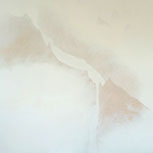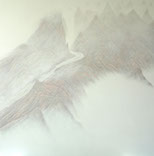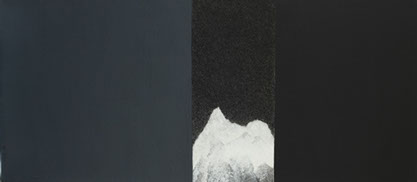窗






CLOUD IS MOUNTAIN
31 MARCH TO 30 APRIL 2006
East & West Art, Melbourne, Australia
The essential factor in sensing art is receiving the messages for the artist. One can gather detailed information, develop technical competence and analyze as long as the spectator receives the artist message.
Our understanding of Chinese painting is the capturing of the essence of the objects and not their outward visible form which is important; it is the successful transmission of the feeling, the inner spirit or movement and not the precise depiction of the objects by which the art is measured.Michael Sullivan in his book The Meeting of Eastern and Western Art states, “Western realism, because it demands an analytic approach to the subject, gets in the way both of free calligraphic expression and the intuitive generalization from experience that give Chinese painting its timeless, universal quality…” There has been steady progress from both Eastern and Western artists this century toward the creation of a global artistic approach; one which is rooted in the respective cultures but which has its foundation the communication of higher ideals through art. An awareness which seemed to emerge most significantly in Abstract Expressionism, where the physical and philosophical methodology merged as one. The example being Jackson Pollock and his “Action Painting” and what he said about his method, “….the painting has a life of its own. I try to let it come though. It is only when I lose contact with the painting that the result is a mess” and seventeenth century master, Shitao, who in his essay on painting, “Hua yu lu”, talked of the artist’s exhilaration carrying him through the painting on an unbroken surge of power.
Is this, the enlightenment of Zen? The inner spirit of traditional Chinese painting, Qi ?Zen can be analyzed, it can be described, it can be sensed but it is a vague image with no substance until it is experienced. How do we know that it really exists? Aside from the testimony of many who seem to know, there are the paintings of the Zen masters. Contemporary Chinese painting has absorbed many stylistic and technical developments from Western art over the last century in areas relevant to their style but have never lost touch with the essentially inner spirit of great art form which their tradition springs. Drawing from Matisse …. An artist is born with the sensibility of that period, and it counts for more than any learning can give them. The artist communicates the age and anyone who cultivates their sensors can communicate with this inner spirit. You are invited to make the transition from spectator to perceiver.Jiwye To lives in this the 21st century, this generation of Eastern and Western thought.Jiwye’s new series Cloud is Mountain incorporates his study and teaching in Buddhist art with his life in modern Hong Kong. A contrast which he defines by mountains, fixed to the earth and solid, with clouds, spirits, pure and refined. Yet he complicates this by the imagery of the fragility of both, in that the mountain can always be moved by man, whereas the cloud cannot. Though the cloud may dissipate it can always return in a different form. Jiwye’s paintings can always be analysed but the spectator will always perceive his work in their own individual way. MARJORIE HO, Gallery Director
31 MARCH TO 30 APRIL 2006
East & West Art, Melbourne, Australia
The essential factor in sensing art is receiving the messages for the artist. One can gather detailed information, develop technical competence and analyze as long as the spectator receives the artist message.
Our understanding of Chinese painting is the capturing of the essence of the objects and not their outward visible form which is important; it is the successful transmission of the feeling, the inner spirit or movement and not the precise depiction of the objects by which the art is measured.Michael Sullivan in his book The Meeting of Eastern and Western Art states, “Western realism, because it demands an analytic approach to the subject, gets in the way both of free calligraphic expression and the intuitive generalization from experience that give Chinese painting its timeless, universal quality…” There has been steady progress from both Eastern and Western artists this century toward the creation of a global artistic approach; one which is rooted in the respective cultures but which has its foundation the communication of higher ideals through art. An awareness which seemed to emerge most significantly in Abstract Expressionism, where the physical and philosophical methodology merged as one. The example being Jackson Pollock and his “Action Painting” and what he said about his method, “….the painting has a life of its own. I try to let it come though. It is only when I lose contact with the painting that the result is a mess” and seventeenth century master, Shitao, who in his essay on painting, “Hua yu lu”, talked of the artist’s exhilaration carrying him through the painting on an unbroken surge of power.
Is this, the enlightenment of Zen? The inner spirit of traditional Chinese painting, Qi ?Zen can be analyzed, it can be described, it can be sensed but it is a vague image with no substance until it is experienced. How do we know that it really exists? Aside from the testimony of many who seem to know, there are the paintings of the Zen masters. Contemporary Chinese painting has absorbed many stylistic and technical developments from Western art over the last century in areas relevant to their style but have never lost touch with the essentially inner spirit of great art form which their tradition springs. Drawing from Matisse …. An artist is born with the sensibility of that period, and it counts for more than any learning can give them. The artist communicates the age and anyone who cultivates their sensors can communicate with this inner spirit. You are invited to make the transition from spectator to perceiver.Jiwye To lives in this the 21st century, this generation of Eastern and Western thought.Jiwye’s new series Cloud is Mountain incorporates his study and teaching in Buddhist art with his life in modern Hong Kong. A contrast which he defines by mountains, fixed to the earth and solid, with clouds, spirits, pure and refined. Yet he complicates this by the imagery of the fragility of both, in that the mountain can always be moved by man, whereas the cloud cannot. Though the cloud may dissipate it can always return in a different form. Jiwye’s paintings can always be analysed but the spectator will always perceive his work in their own individual way. MARJORIE HO, Gallery Director
方 遠
杜之外的雲山無痕
「空,並非是不存在,而是妙有。因為一切現象自身之本質就是空。一切現象,一切存在皆自空而生,若能了解空之道,則能超越空,連空也空掉,達至真空。此時,人生一切皆為真空所解決,此際面對天地之悠悠,皆可遨遊逍遙。心已空,則能容納萬境,一切即一,一即一切。」這是杜之外在一九八八八年一幅題為「空能納萬境」的作品的題字。空的思維,是他藝術方向,也是他的人生觀。空,是放下,放下已有的,方能拾起新的,方能帶來新意,他放下水墨紙本的形式,放下了抽象語言,重構意象,邁向新域。
杜之外,居於香港。二十世紀七十年代開始個人的藝術追尋,先後經歷了西方的超現實主義、抽象主義、超級寫實主義的洗禮,鑽研其概念及技巧,復投入西方現當代哲學的思維研究,尋現代藝術之根,探當代藝術之源,了解藝術背後的思維概念。八十年代,研讀於香港佛教能仁書院藝術系,兼研西方現代哲學、道德經及華嚴經,探首道釋,特別是道與空的概念,由道與空的概念的渾然,延伸至人生觀及藝術觀—守靜、破執。藝術家以水墨表達其研習的得著,他的作品充滿哲理感,作品不落於任何知性的形象,他要呈露現象的本質,由觀者自行去游思冥想,直接走進現象的本質,靜思現象的本性,去除現象的固有形象。撇除慣性的知性形態,一切皆無障、無礙,以物觀物,明心而見性。他的作品,不論是黑或是白,總讓觀者的思維飛越千里雲外。
九十年代末,藝術家凝思內想,靜濾個人的藝術方向。他,破執,放下既有,空出思維。他研習現象學、禪學、觀念藝術。他,守靜,在火浴,如火鳳凰集香木自焚;尋新生,在時間裏自焚,於永恆裏結晶。他放下了過往的,重新思考,塑營新的美學概念,表達美學新思維。他從現代音樂的越界(crossover)概念引發,在中國傳統山水畫的形態、技法、時空概念,中國古詩的語法與表現方式,中外建築的空間和簡約意念,西方寫實主義的技巧的渾融中,帶出crossover的美學概念。杜之外,面對空山淨石,細草繁花,秀峰巨壑,溪澗流泉,飛瀑傾瀉,潺潺而下,湲湲而去。雲湧湧兮自來自去,浮雲處處,繚繚繞繞,結山而伴,雲是無痕山是空茫,雲山兩相忘。他,以雲山為意象,越界於多元文化空間,賦之以色,寫於鋒毫,揮毫而下,尺幅之上,雲無痕山無咎,水至清,鳥鳴幽,花非花,霧非霧,行雲流水,行於當行,止於所止,柳暗花自明,山窮小徑現,水盡泉再逢,人生如畫,畫如人生。
至水窮處,看雲起時,陣隱陣現,飛瀉之勢,俯仰之間,返虛入渾,惚兮恍兮,其中有象,恍兮惚兮,其中有物。天地悠悠,上天下地,一即一切,一切即一。雲深似雪,山痕雲網,不絕而湧,依岩斜落,峰展雲橫,湧浮之間,萬物聚一,凝神遐想,妙悟自然,情之極致,景之盡處,物我兩忘,茫茫白白,白白茫茫,聒靜寂然,無言獨化,雲山無痕,是亦彼也,彼亦是也,得其環中,得意無窮。雲出岫,壑擁流,靜裏動,動中靜,道可道,非常道,名可名,非常名,凝思時,致虛,守靜篤。雲湧時,山,若隱若現,虛而實有,寂而存音,離形去智;山矗然,雲,靜故了群動,橫斜水清淺,分野中巒變,陰晴眾壑殊。群峰之巔,雲湧沖霄,幽幽湖邊,朶雲片片,渾然兩相忘。聚了又散,散了又聚,聚散之間,江流天地外,山色有中無,白雲自來去。空山浮雲至,眾鳥高飛鳴,春來草自青。
道之外,任心自在,形與象,意與畫,手與心,兩皆相忘。形與象合而為一,意不在畫而有畫在,不滯於手,不礙於心,不知然而然而得其所然。一切眾生,莫不是道,道之外,萬物歸乎為一,以一觀眾,以物觀物,道是我,我是道,盡性而知天,盡物而顯道。道外空寂,思量自化,內外明徹,靜觀自在,一切無礙,諸念皆空,挾宏思以遨遊。「雲山無痕」(Cloud is Mountain)是一系列越界多元文化領域的作品,是杜之外游東走西,穿中梭外,邃古來今的一渡驛站。這一驛在這,下一驛在哪?藝術家的一生就是在建構問題與解構問題的相互交替中不斷追尋,在不斷的追尋中,藝術家便開闢了藝術新徑,成熟了個人的藝術表現。這一驛是雲山兩相忘,橫看成嶺側成峰。下一驛是‥‥‥是道之外?是見雲是雲,見山是山?是致虛極?守靜篤?是破執?人生驛旅,三數十年,雨過天清,一輪明月。當下之外,就是至極無垠的驛旅。
(原載澳洲墨爾本《老子》(Master NOW)2006年第159期)
杜之外的雲山無痕
「空,並非是不存在,而是妙有。因為一切現象自身之本質就是空。一切現象,一切存在皆自空而生,若能了解空之道,則能超越空,連空也空掉,達至真空。此時,人生一切皆為真空所解決,此際面對天地之悠悠,皆可遨遊逍遙。心已空,則能容納萬境,一切即一,一即一切。」這是杜之外在一九八八八年一幅題為「空能納萬境」的作品的題字。空的思維,是他藝術方向,也是他的人生觀。空,是放下,放下已有的,方能拾起新的,方能帶來新意,他放下水墨紙本的形式,放下了抽象語言,重構意象,邁向新域。
杜之外,居於香港。二十世紀七十年代開始個人的藝術追尋,先後經歷了西方的超現實主義、抽象主義、超級寫實主義的洗禮,鑽研其概念及技巧,復投入西方現當代哲學的思維研究,尋現代藝術之根,探當代藝術之源,了解藝術背後的思維概念。八十年代,研讀於香港佛教能仁書院藝術系,兼研西方現代哲學、道德經及華嚴經,探首道釋,特別是道與空的概念,由道與空的概念的渾然,延伸至人生觀及藝術觀—守靜、破執。藝術家以水墨表達其研習的得著,他的作品充滿哲理感,作品不落於任何知性的形象,他要呈露現象的本質,由觀者自行去游思冥想,直接走進現象的本質,靜思現象的本性,去除現象的固有形象。撇除慣性的知性形態,一切皆無障、無礙,以物觀物,明心而見性。他的作品,不論是黑或是白,總讓觀者的思維飛越千里雲外。
九十年代末,藝術家凝思內想,靜濾個人的藝術方向。他,破執,放下既有,空出思維。他研習現象學、禪學、觀念藝術。他,守靜,在火浴,如火鳳凰集香木自焚;尋新生,在時間裏自焚,於永恆裏結晶。他放下了過往的,重新思考,塑營新的美學概念,表達美學新思維。他從現代音樂的越界(crossover)概念引發,在中國傳統山水畫的形態、技法、時空概念,中國古詩的語法與表現方式,中外建築的空間和簡約意念,西方寫實主義的技巧的渾融中,帶出crossover的美學概念。杜之外,面對空山淨石,細草繁花,秀峰巨壑,溪澗流泉,飛瀑傾瀉,潺潺而下,湲湲而去。雲湧湧兮自來自去,浮雲處處,繚繚繞繞,結山而伴,雲是無痕山是空茫,雲山兩相忘。他,以雲山為意象,越界於多元文化空間,賦之以色,寫於鋒毫,揮毫而下,尺幅之上,雲無痕山無咎,水至清,鳥鳴幽,花非花,霧非霧,行雲流水,行於當行,止於所止,柳暗花自明,山窮小徑現,水盡泉再逢,人生如畫,畫如人生。
至水窮處,看雲起時,陣隱陣現,飛瀉之勢,俯仰之間,返虛入渾,惚兮恍兮,其中有象,恍兮惚兮,其中有物。天地悠悠,上天下地,一即一切,一切即一。雲深似雪,山痕雲網,不絕而湧,依岩斜落,峰展雲橫,湧浮之間,萬物聚一,凝神遐想,妙悟自然,情之極致,景之盡處,物我兩忘,茫茫白白,白白茫茫,聒靜寂然,無言獨化,雲山無痕,是亦彼也,彼亦是也,得其環中,得意無窮。雲出岫,壑擁流,靜裏動,動中靜,道可道,非常道,名可名,非常名,凝思時,致虛,守靜篤。雲湧時,山,若隱若現,虛而實有,寂而存音,離形去智;山矗然,雲,靜故了群動,橫斜水清淺,分野中巒變,陰晴眾壑殊。群峰之巔,雲湧沖霄,幽幽湖邊,朶雲片片,渾然兩相忘。聚了又散,散了又聚,聚散之間,江流天地外,山色有中無,白雲自來去。空山浮雲至,眾鳥高飛鳴,春來草自青。
道之外,任心自在,形與象,意與畫,手與心,兩皆相忘。形與象合而為一,意不在畫而有畫在,不滯於手,不礙於心,不知然而然而得其所然。一切眾生,莫不是道,道之外,萬物歸乎為一,以一觀眾,以物觀物,道是我,我是道,盡性而知天,盡物而顯道。道外空寂,思量自化,內外明徹,靜觀自在,一切無礙,諸念皆空,挾宏思以遨遊。「雲山無痕」(Cloud is Mountain)是一系列越界多元文化領域的作品,是杜之外游東走西,穿中梭外,邃古來今的一渡驛站。這一驛在這,下一驛在哪?藝術家的一生就是在建構問題與解構問題的相互交替中不斷追尋,在不斷的追尋中,藝術家便開闢了藝術新徑,成熟了個人的藝術表現。這一驛是雲山兩相忘,橫看成嶺側成峰。下一驛是‥‥‥是道之外?是見雲是雲,見山是山?是致虛極?守靜篤?是破執?人生驛旅,三數十年,雨過天清,一輪明月。當下之外,就是至極無垠的驛旅。
(原載澳洲墨爾本《老子》(Master NOW)2006年第159期)





“秋水”行吟圖
張平杰
評論家 / 策展人
紐約萊克基金會影像與視覺藝術高級研究員
上海同濟大學新媒體藝術專業客座教授
與之外相識二十餘年,看他的作品從濃筆重墨的抽象漸入物我兩忘的鏡像。此間除了畫風的演變,更是人生軌跡、思維觀念的感悟。之外向來對中、西哲學素有研究,特別是禪宗與“空”的命題。在他近幾年的作品中,幾乎都在淡泊與寧靜中觀“空”,其早期抽象作品是形式的空;近期的山川空濛圖式則是精神內觀的“空”。之外在這些圖式中找到了其精神的切合點。恍兮惚兮,生於塵世,卻又隔著塵世觀象,“以物觀物,理解到物各自有其本性,從而忘乎自我,放下執著。”於是乎,之外的朦朧山水乃是個體的觀象之度,他從莊子的“秋水”篇悟道的生命哲理用圖象的方式來閱讀,於是就產生了這一組“秋水”系列。這寂靜、縹緲、夢幻般的意境既是之外所追求的原真世界。
“一系列如夢似真、渺無人踪的秋意山水境象,讓觀者遠離塵世,放下執著,忘乎對立,隨物之性逍遙遊而心自得,無拘無束,無為無念,獲得精神上的舒暢與自由”。
讓心靈獲得自由,這是中國古代哲人順應自然的修道方式,它通常是一種思辨、一種冥想。而在“秋水”系列裡,這種形而上的精神卻被以圖像的形態折射出來,猶如一束靈光,穿透我們喧囂的物慾社會。超越物與欲之累,“秋水”潤身,貴為饋贈。
“秋水”靜則有聲;“秋水”空則有象;“秋水”朦朧則有形;“秋水”逝則有痕;“秋水”凝則有悟;“秋水”動則有約。 秋水宜人。
張平杰
評論家 / 策展人
紐約萊克基金會影像與視覺藝術高級研究員
上海同濟大學新媒體藝術專業客座教授
與之外相識二十餘年,看他的作品從濃筆重墨的抽象漸入物我兩忘的鏡像。此間除了畫風的演變,更是人生軌跡、思維觀念的感悟。之外向來對中、西哲學素有研究,特別是禪宗與“空”的命題。在他近幾年的作品中,幾乎都在淡泊與寧靜中觀“空”,其早期抽象作品是形式的空;近期的山川空濛圖式則是精神內觀的“空”。之外在這些圖式中找到了其精神的切合點。恍兮惚兮,生於塵世,卻又隔著塵世觀象,“以物觀物,理解到物各自有其本性,從而忘乎自我,放下執著。”於是乎,之外的朦朧山水乃是個體的觀象之度,他從莊子的“秋水”篇悟道的生命哲理用圖象的方式來閱讀,於是就產生了這一組“秋水”系列。這寂靜、縹緲、夢幻般的意境既是之外所追求的原真世界。
“一系列如夢似真、渺無人踪的秋意山水境象,讓觀者遠離塵世,放下執著,忘乎對立,隨物之性逍遙遊而心自得,無拘無束,無為無念,獲得精神上的舒暢與自由”。
讓心靈獲得自由,這是中國古代哲人順應自然的修道方式,它通常是一種思辨、一種冥想。而在“秋水”系列裡,這種形而上的精神卻被以圖像的形態折射出來,猶如一束靈光,穿透我們喧囂的物慾社會。超越物與欲之累,“秋水”潤身,貴為饋贈。
“秋水”靜則有聲;“秋水”空則有象;“秋水”朦朧則有形;“秋水”逝則有痕;“秋水”凝則有悟;“秋水”動則有約。 秋水宜人。

思空圖
空遠
雲山無痕
空靜
秋水
x

































































© 2008-2019 Jiwye To, All Rights Reserved.






























































































































